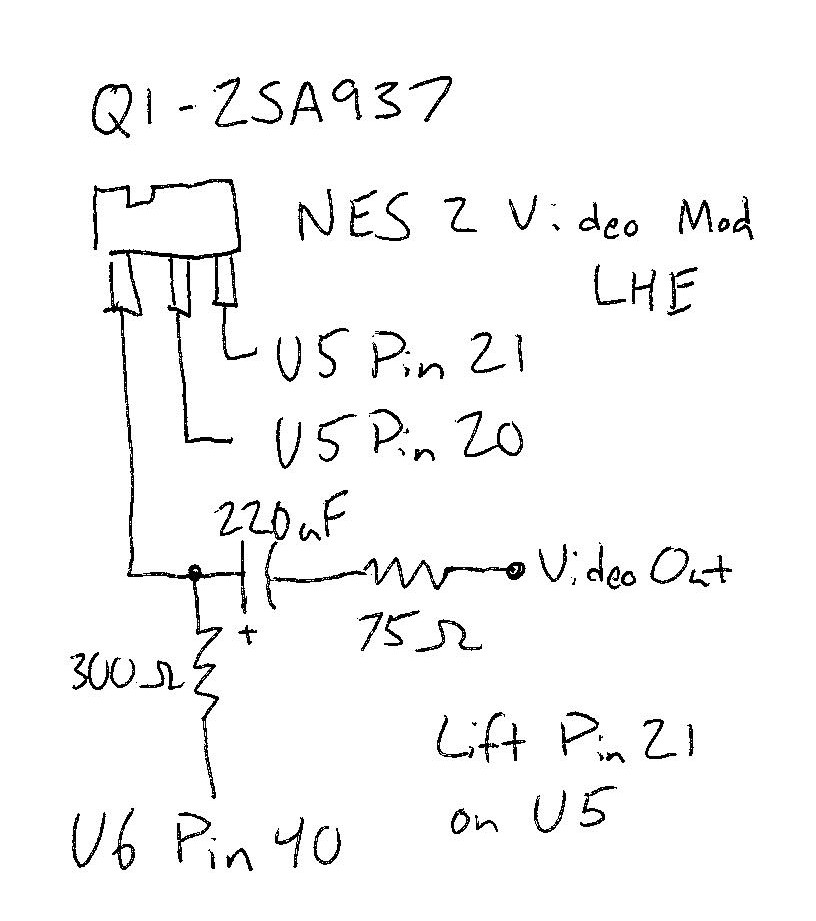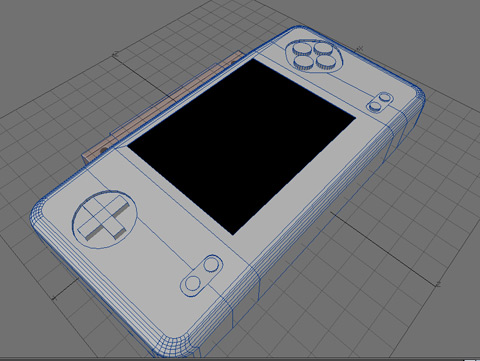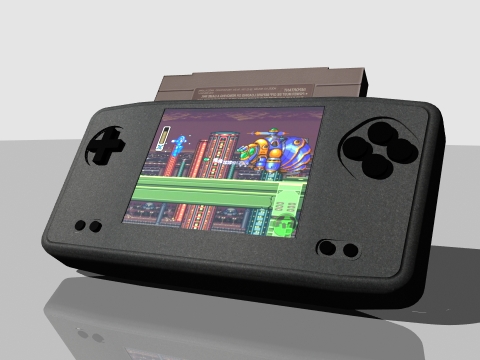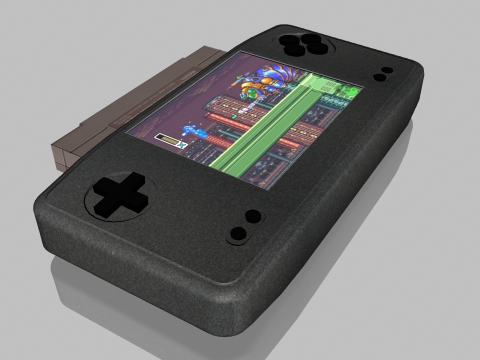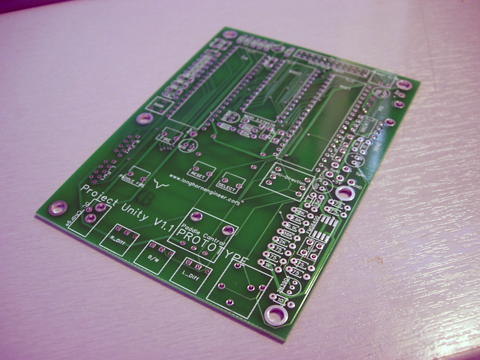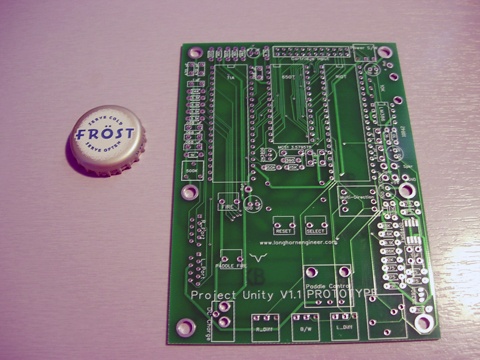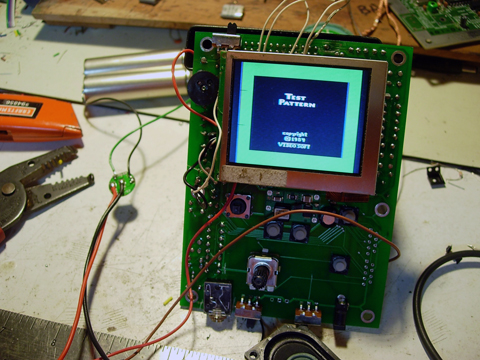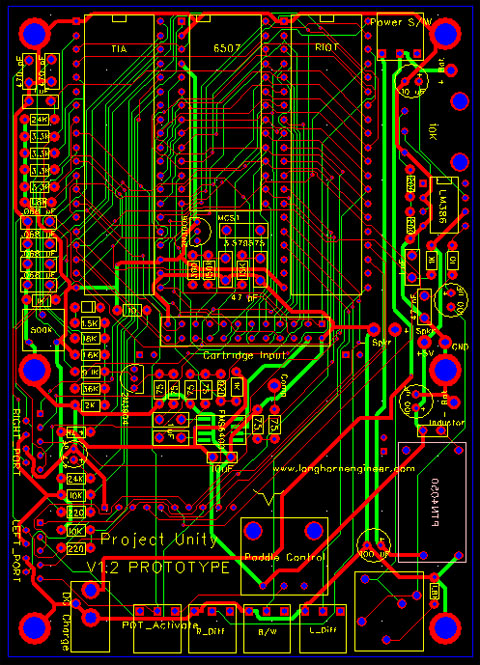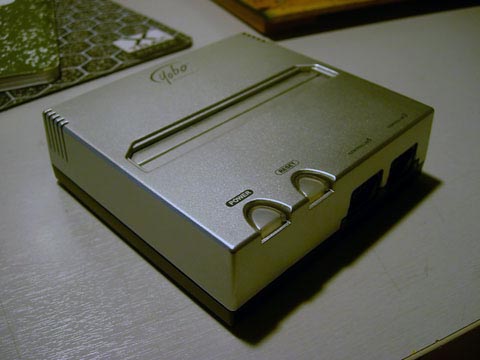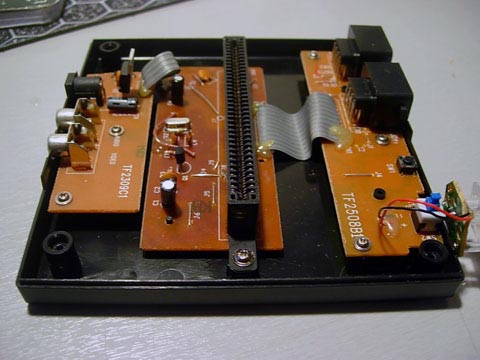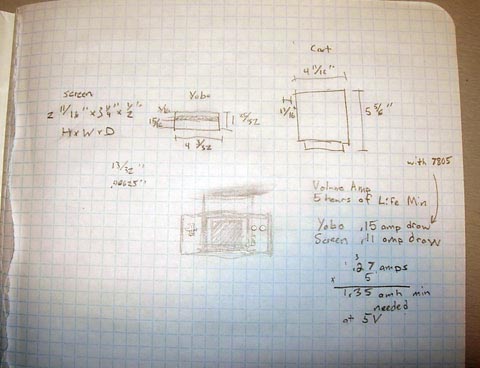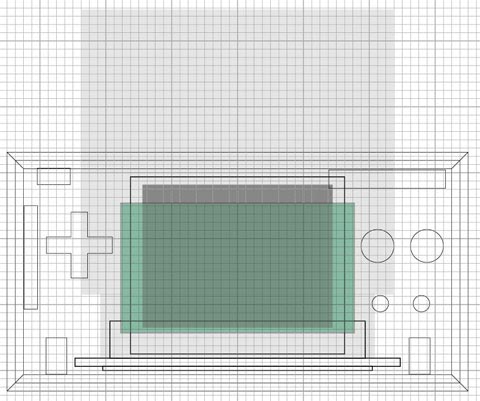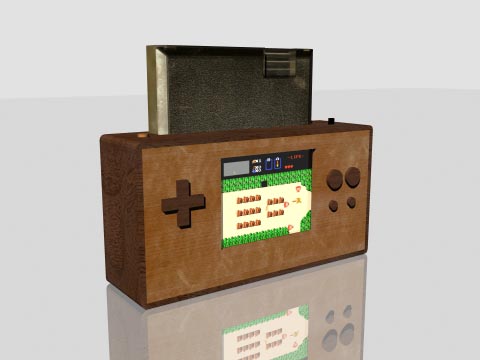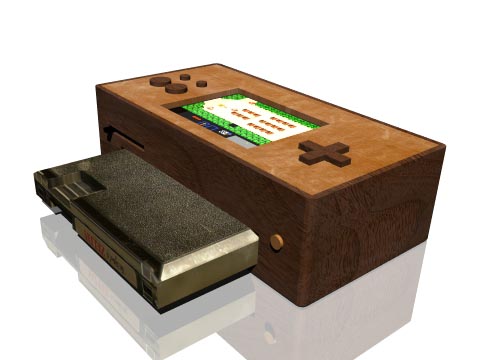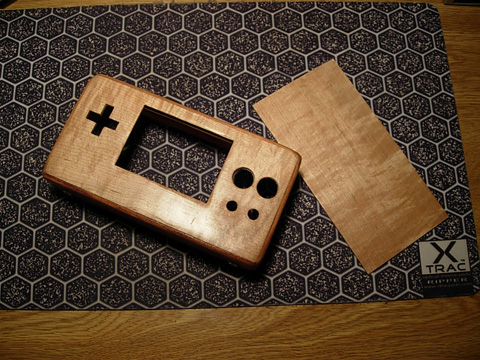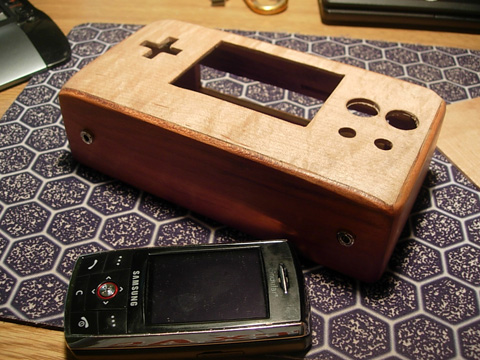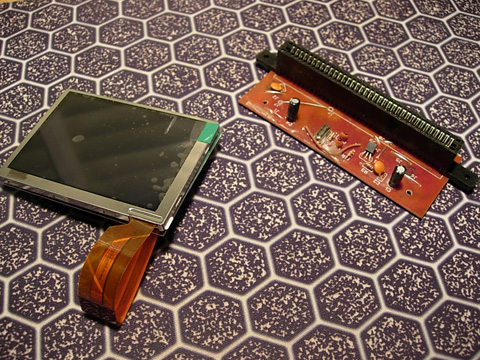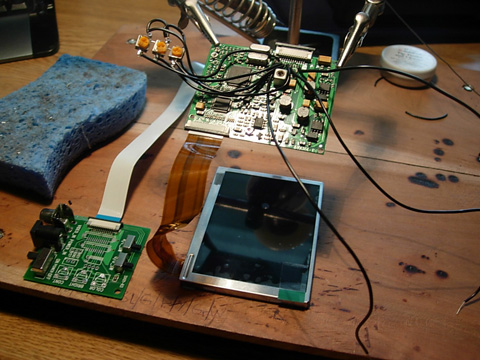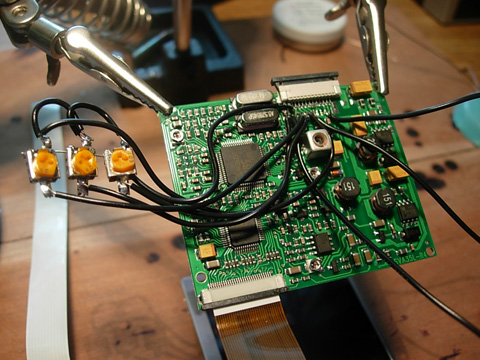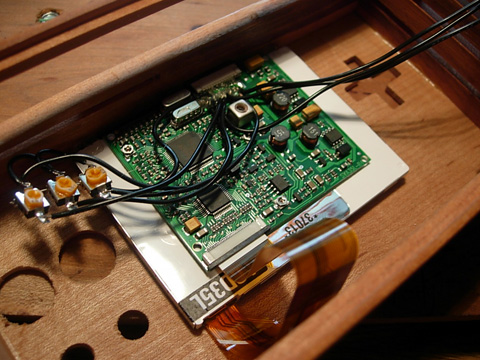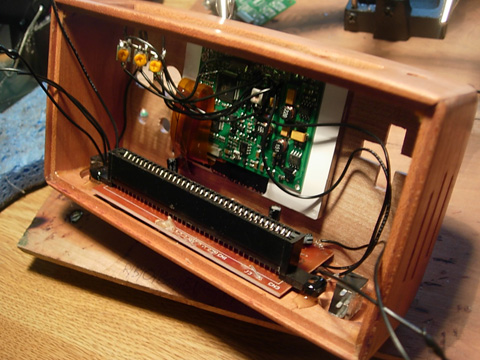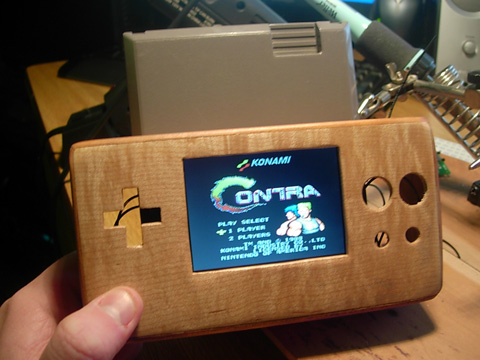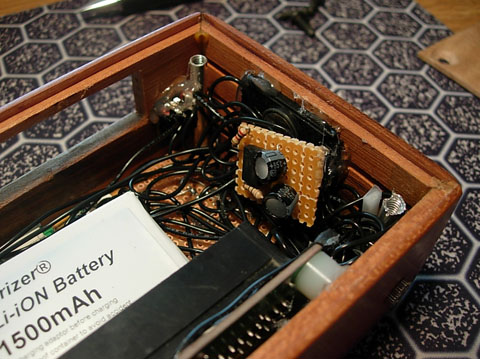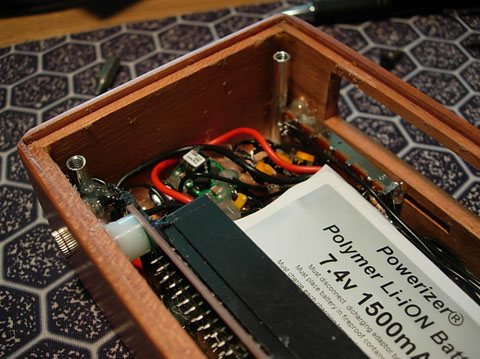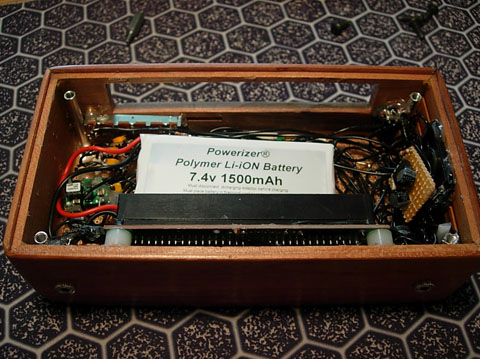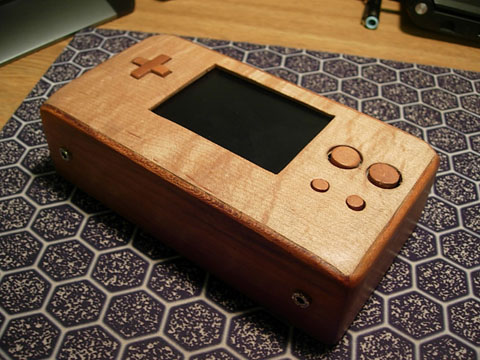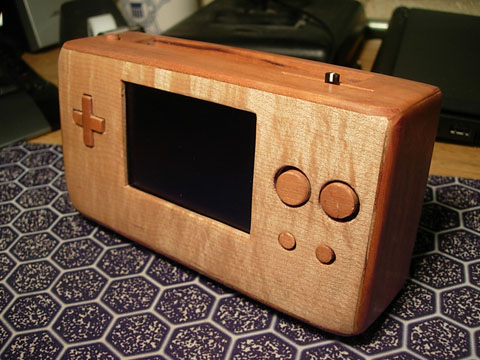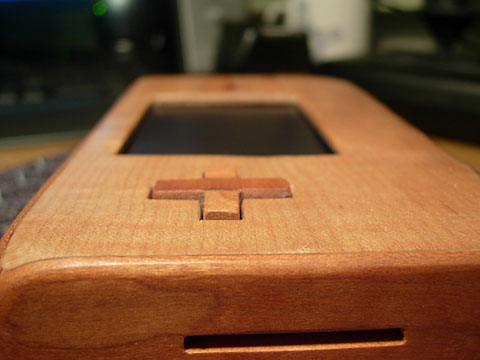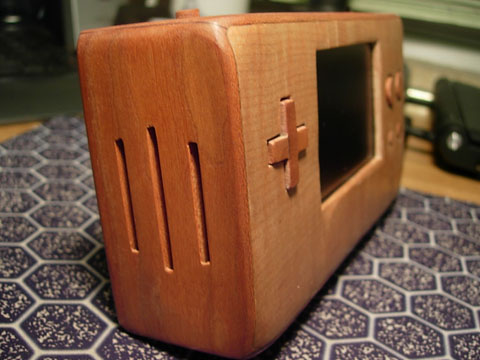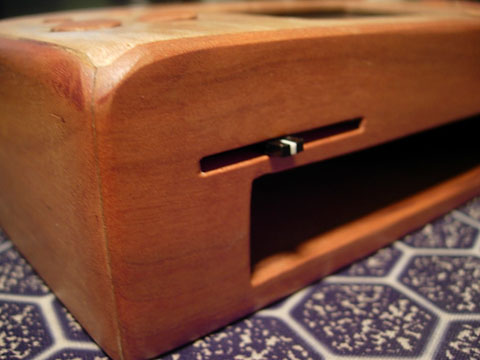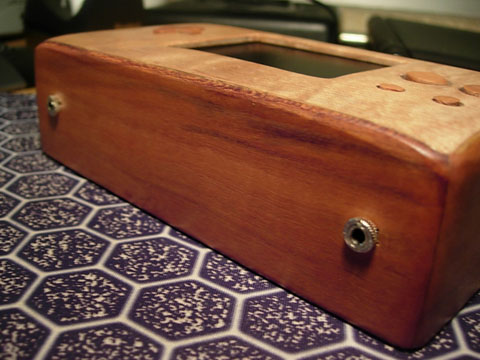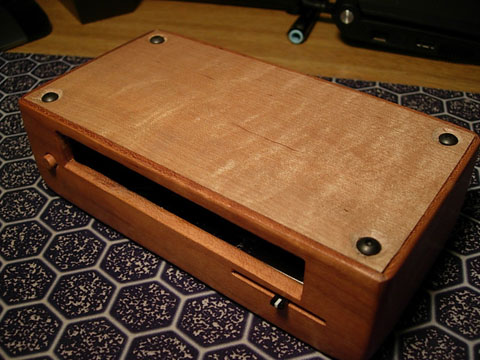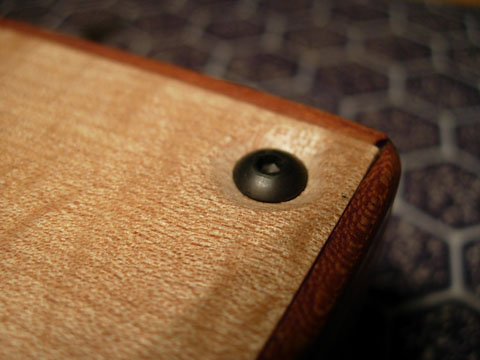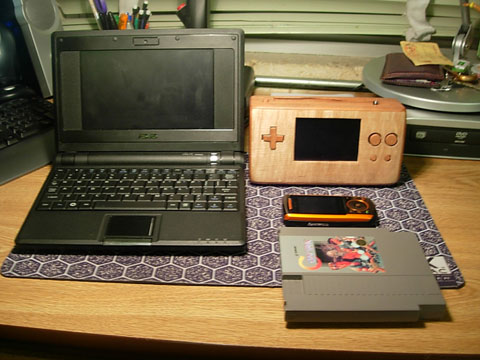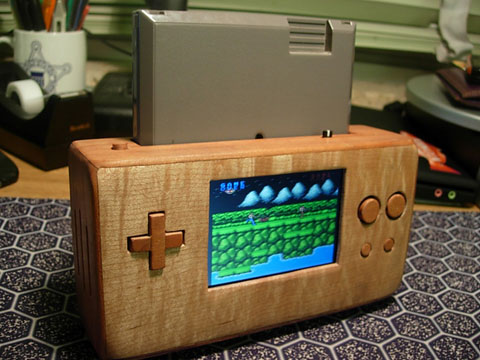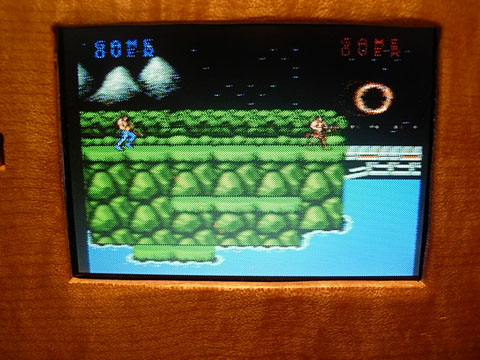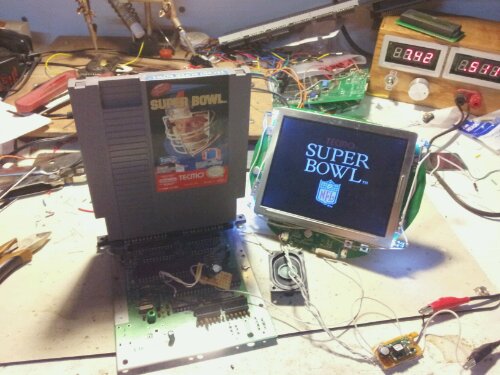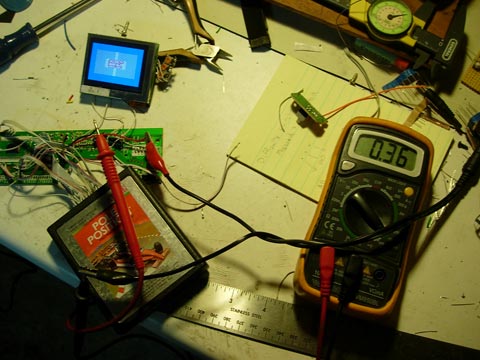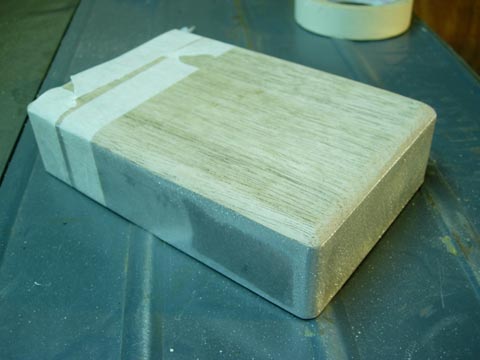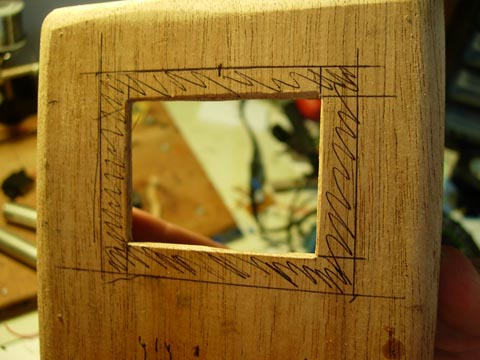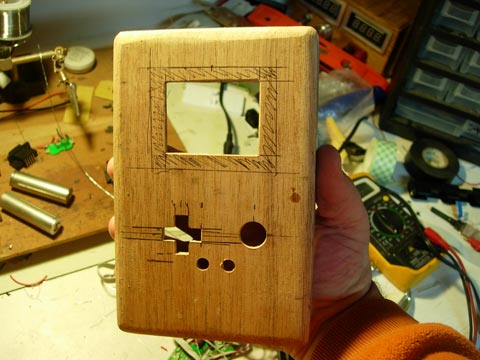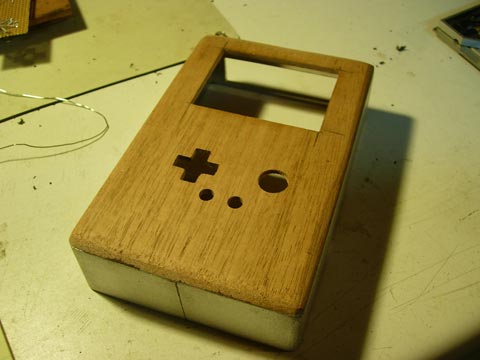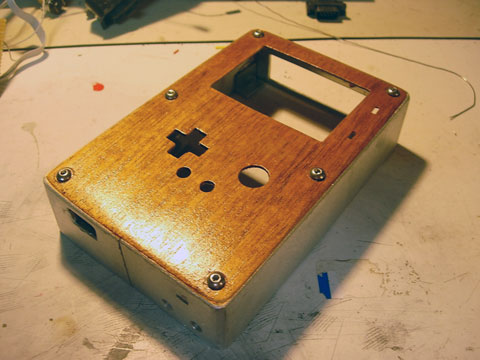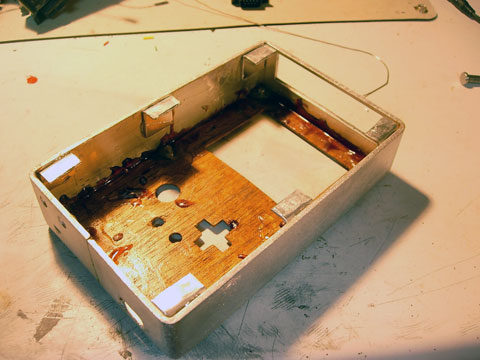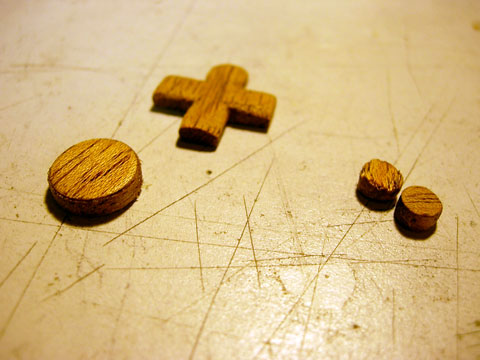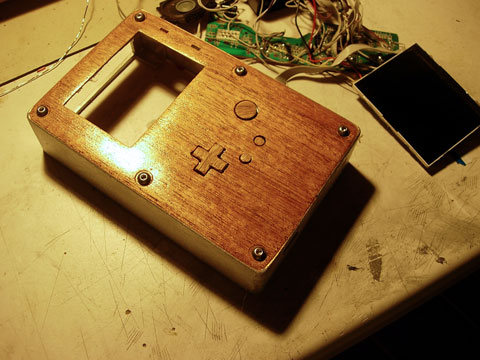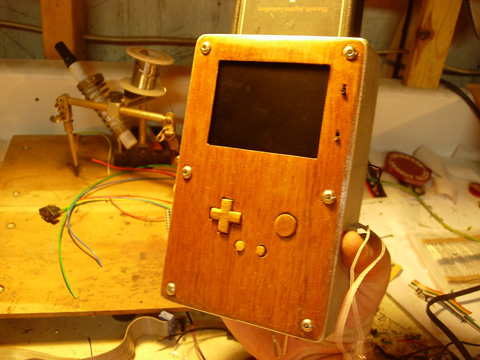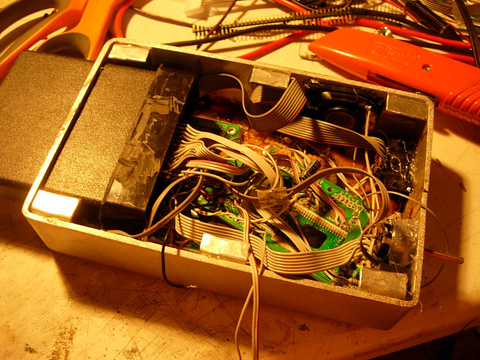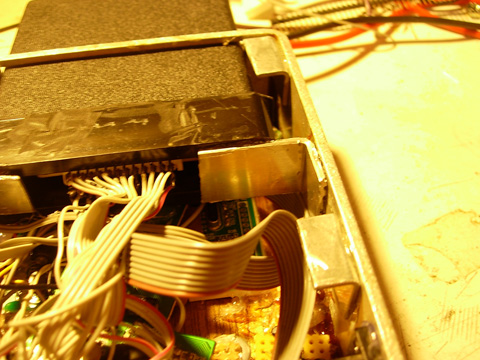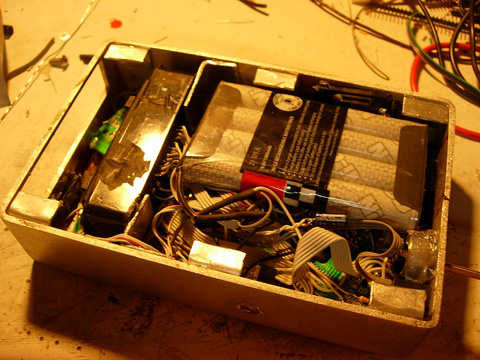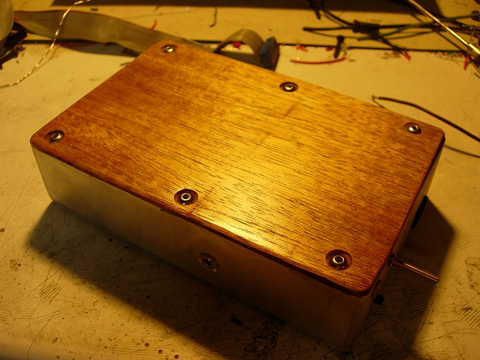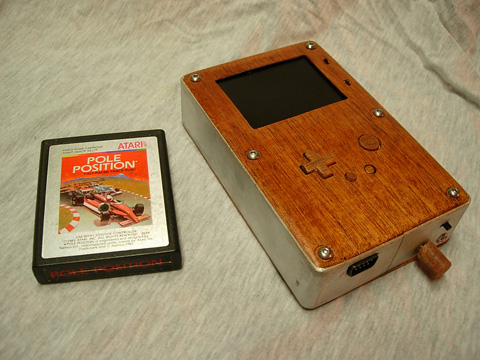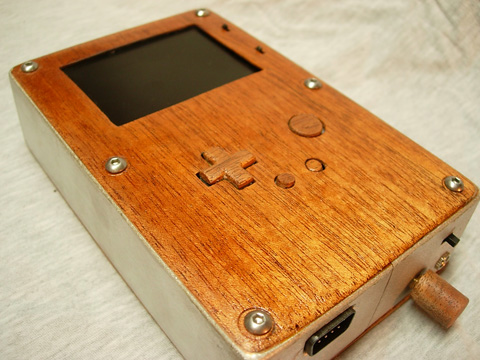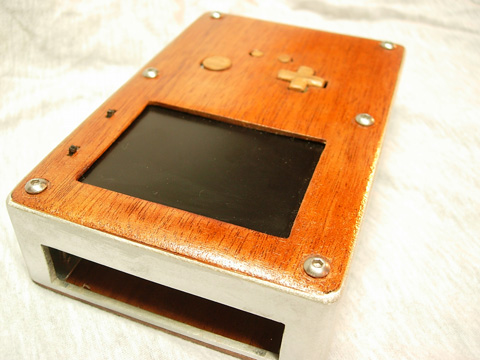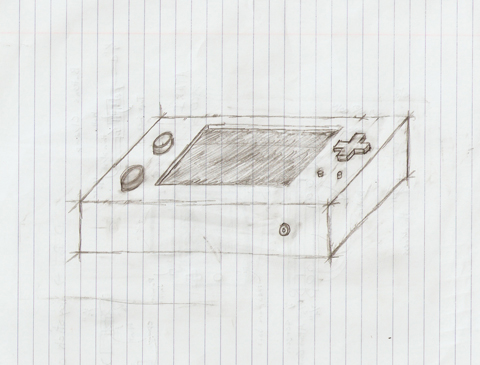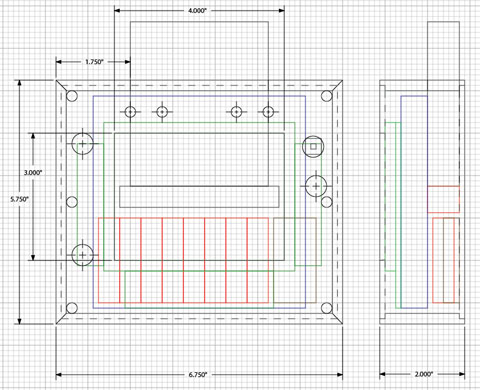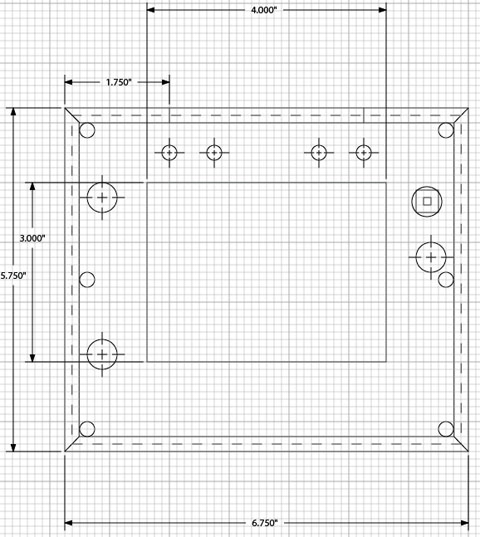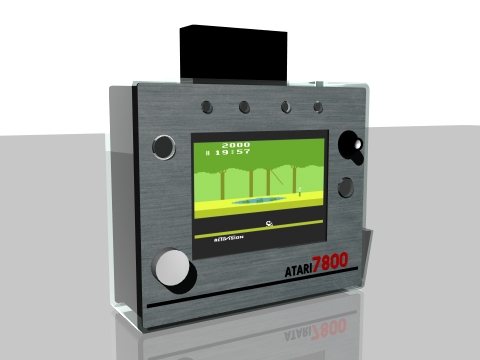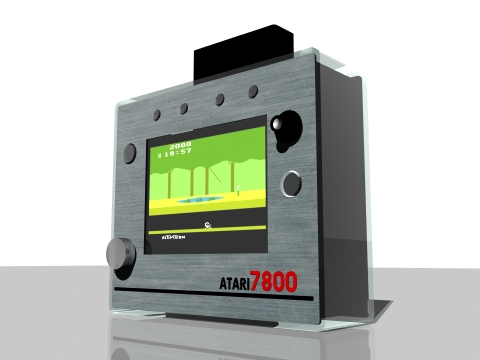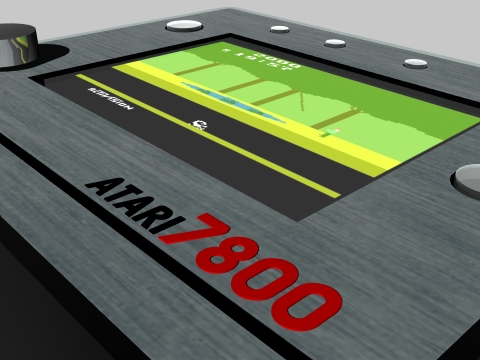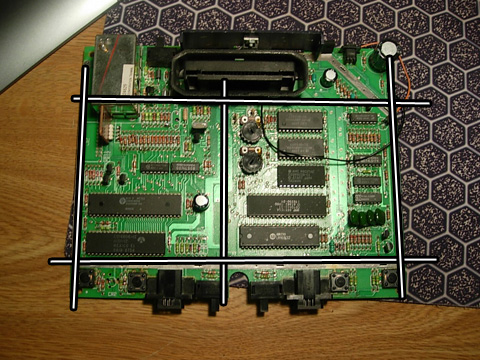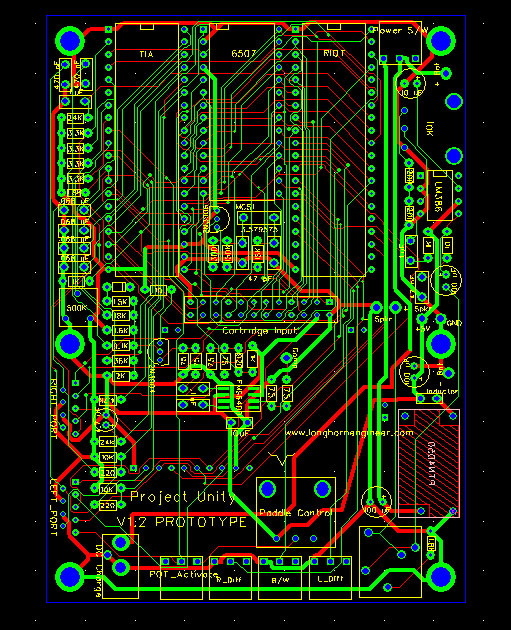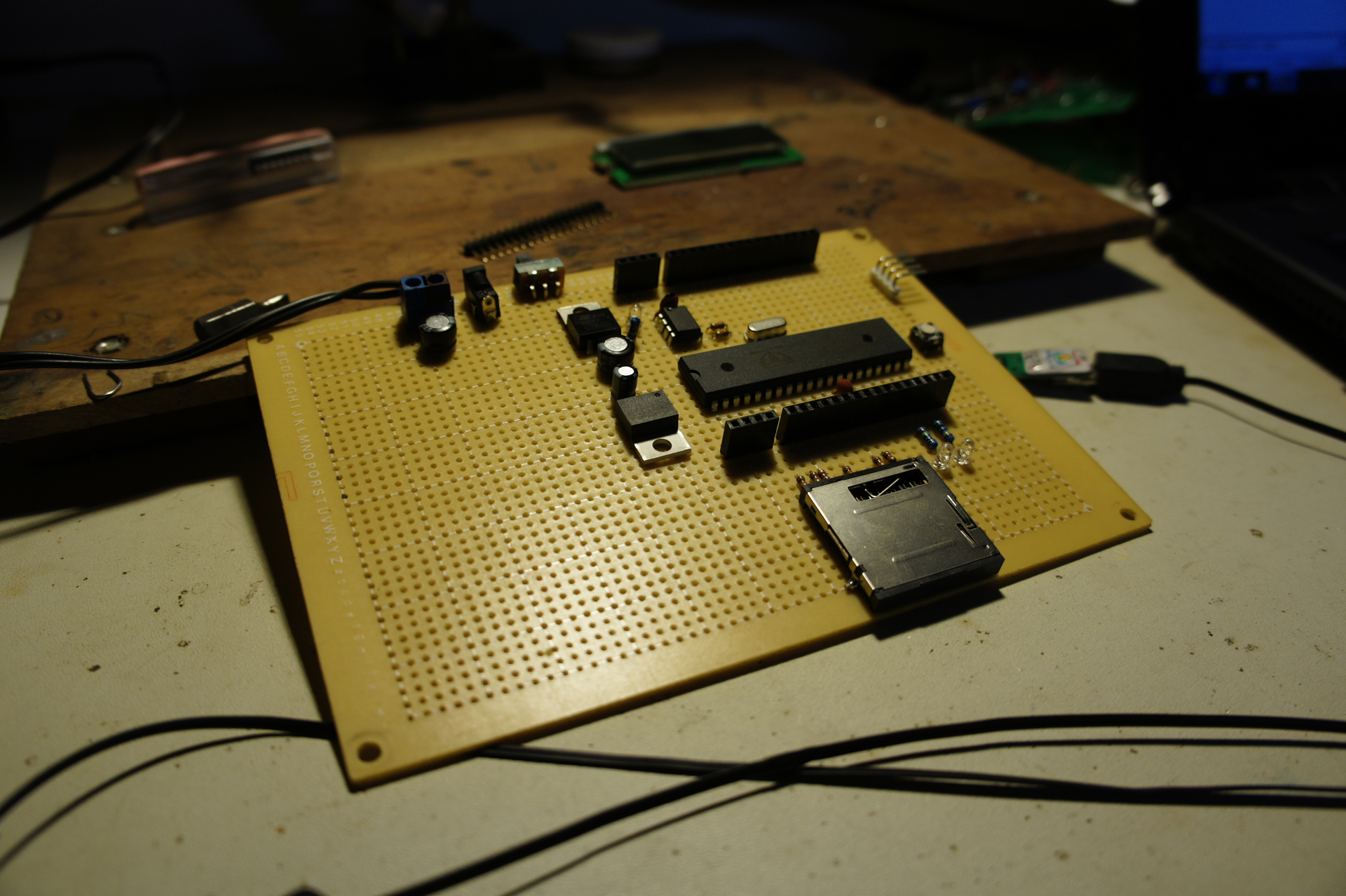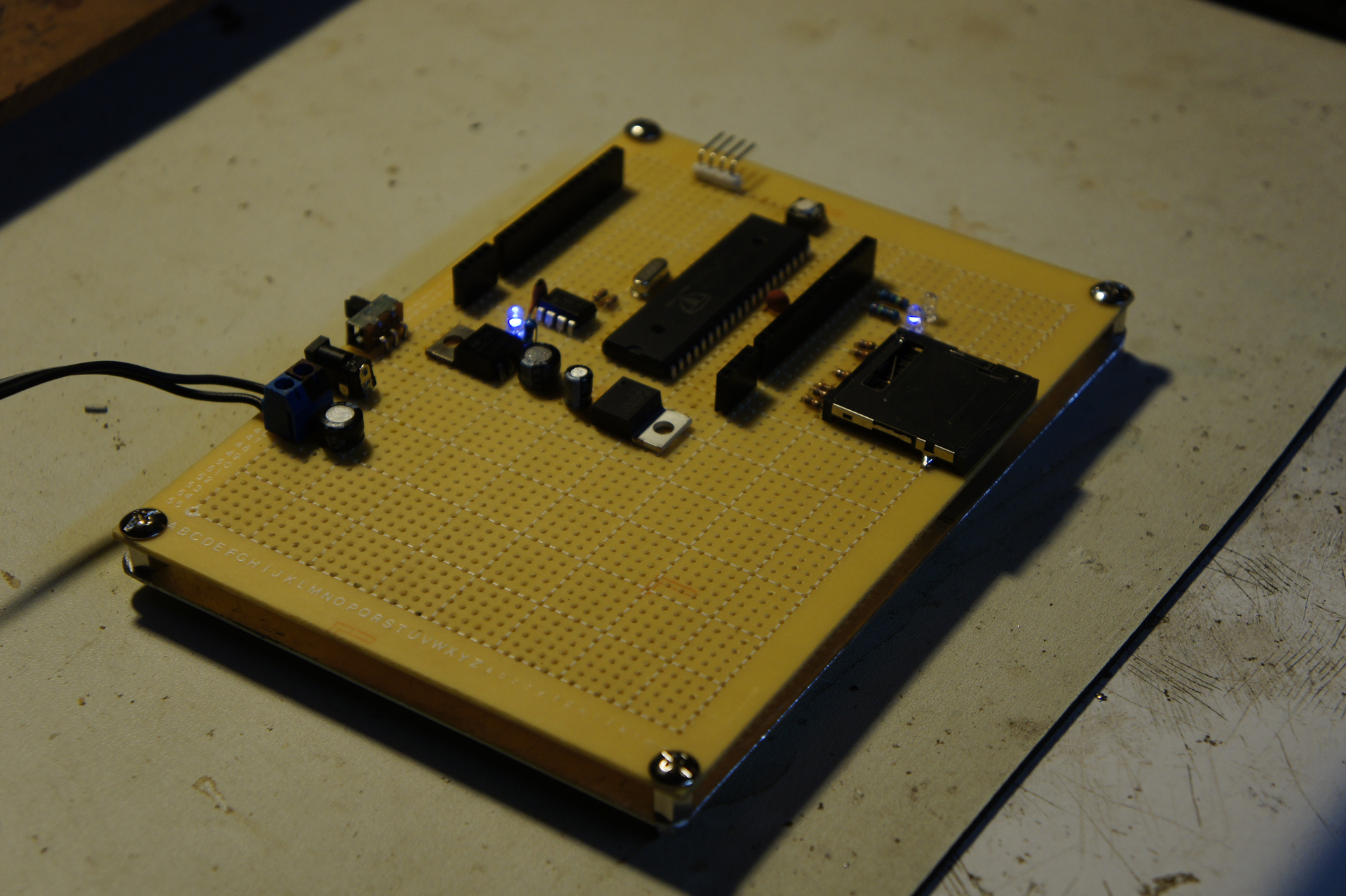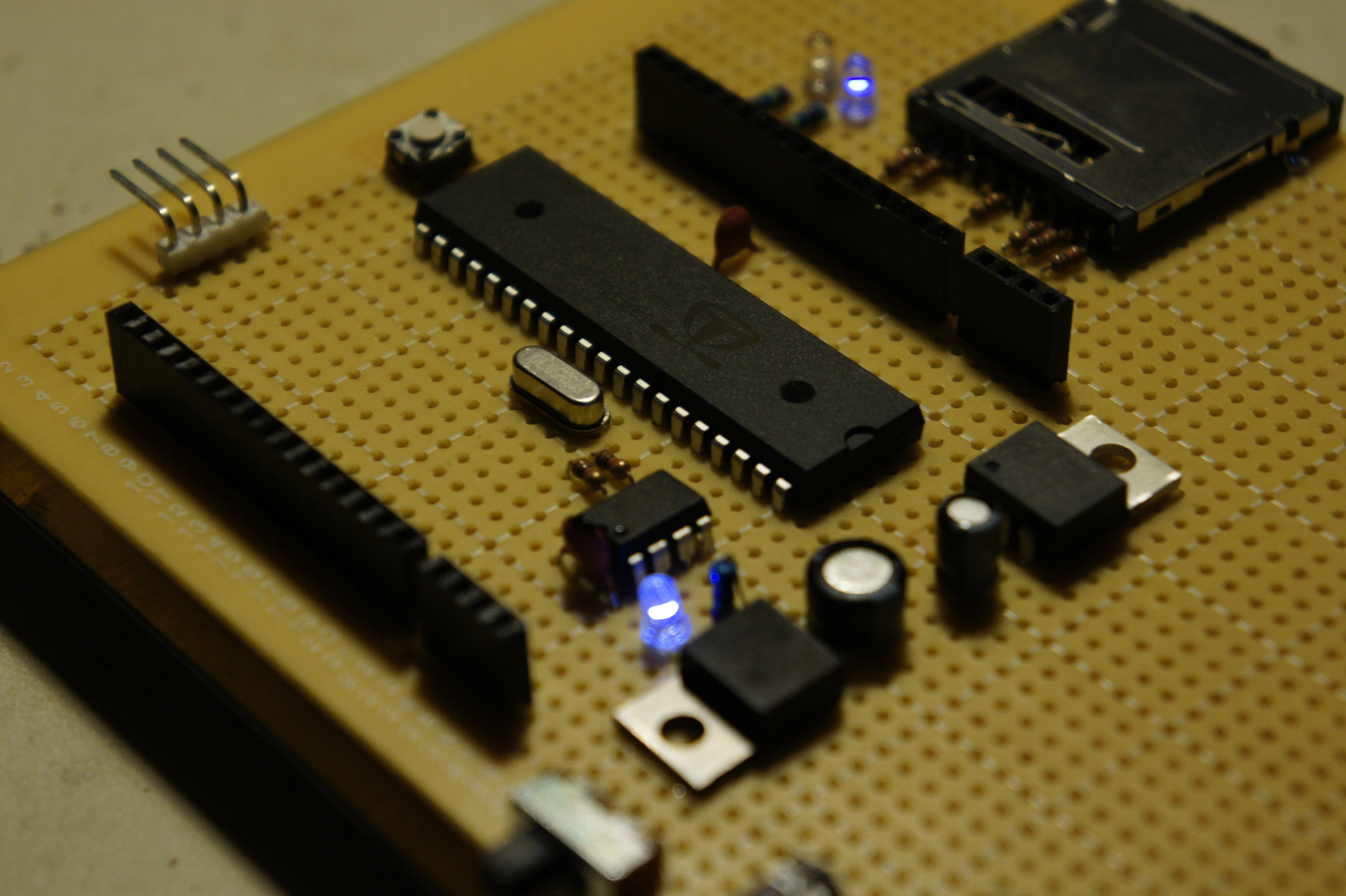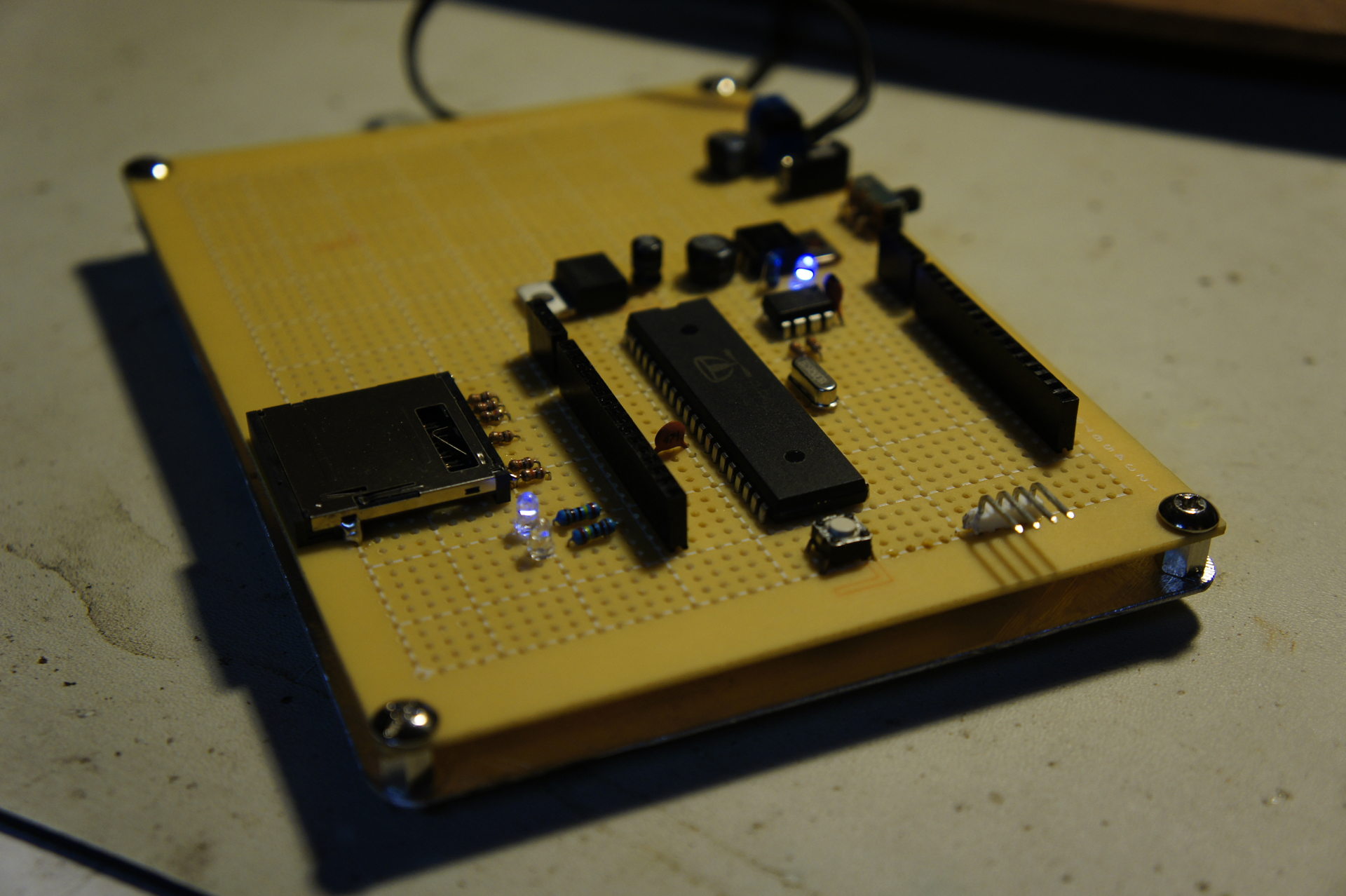Nintendo Duo Portable V1 – Or Duop which is Pronounced “Doowop
This project will be an entry for the “Portable-Palooza” on the Benheck Forums. It could be the first dual NES and SNES portable every finished but I have to check on that.
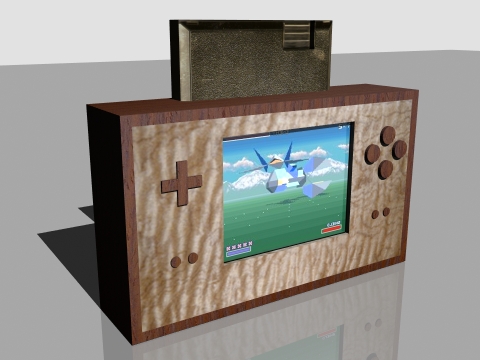
This project was completely designed in 3D space unlike my other portables. Usually I will draw out the design on paper but due to time constraints I passed that option up.
To start I based the design off of the case design on the dimensions posted by “lovablechevy” on the Benheck Forums. Upon receiving the parts I double checked everything and tweaked the design a bit.
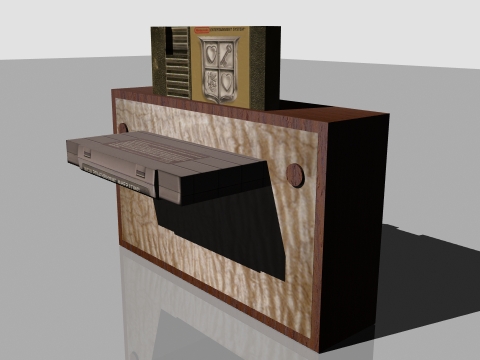
The portable will feature switches that will feel exactly like the button presses on a normal SNES pad (squishy over clicky). Also the portable will know which type of game you have inserted via two switches in the cart slots.
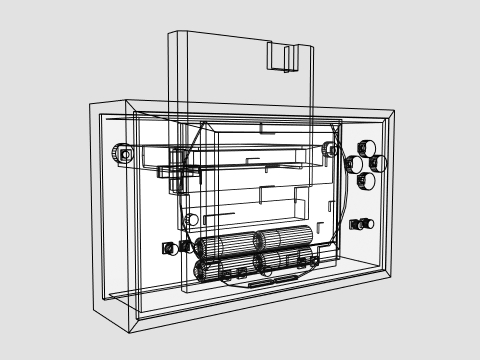
Runs off of 4 AA batteries. Haven’t calculated how long the batteries will last but I guess it will be for around 2 hours.
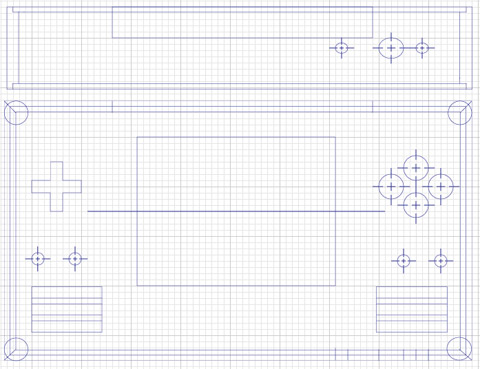
I finished the design of the portable. I rearranged the components to slim the portable down to the same thickness as my SNESp V2 so I really didn’t have to change much on the design of the case.
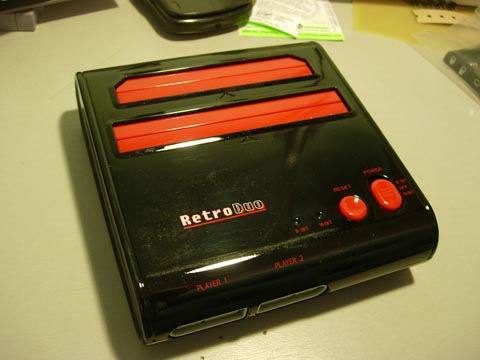
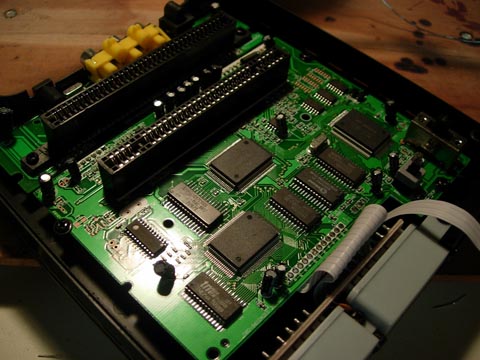
After opening the Retro Duo I was to see first hand how small the board really is. Pretty impressive to see how 20 years of tech can shrink down a SNES and NES.
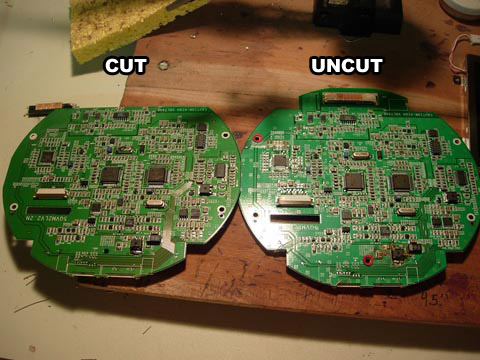
To make the screen fit inside the 4.5″ limit the top section that is used for the back light is chopped off completely. I used a scroll saw then filed the rough edge down.
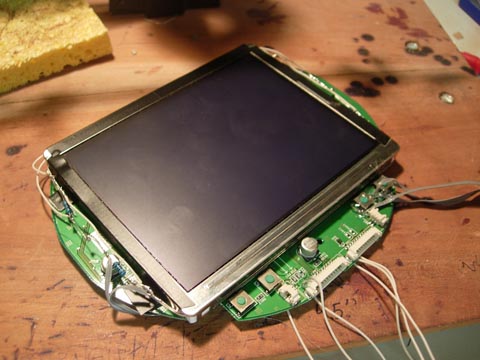
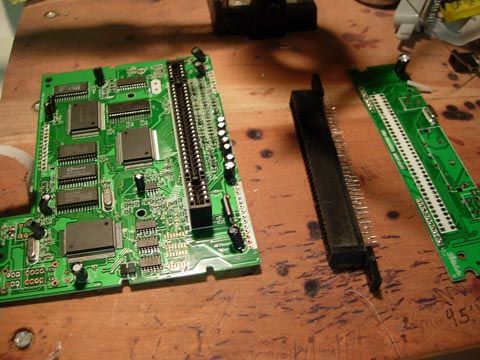
I desoldered the NES cart slot and board section to I can move it to its new location and bend the cart slot by 90 degrees.
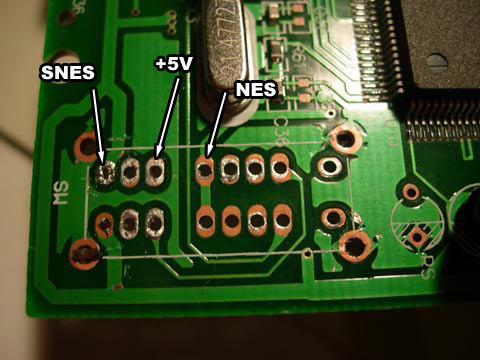
Here is a pinout of the power switch that is on the SNES side of the portable. Pretty simple. This disables the LED lights on the board so I removed those.
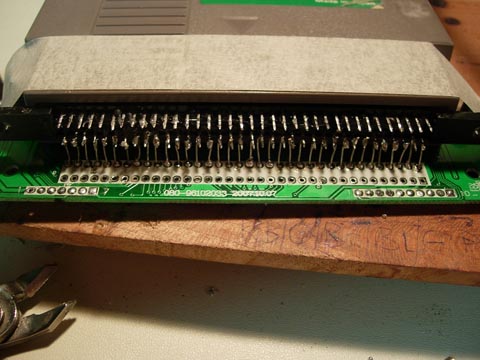
I used some bare hook-up wire to wire the cart slot. Since I am not going far I decided this would be the best solution.
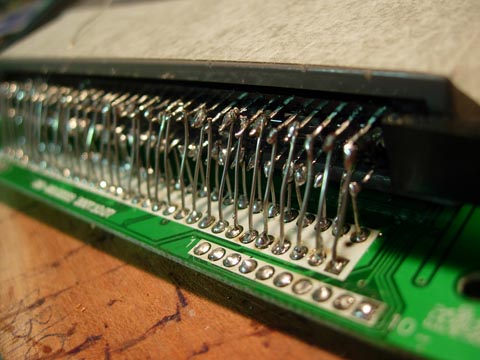
I did some testing and found it didn’t work. A couple hours later I isolated the problem to a little tiny cold solder joint.
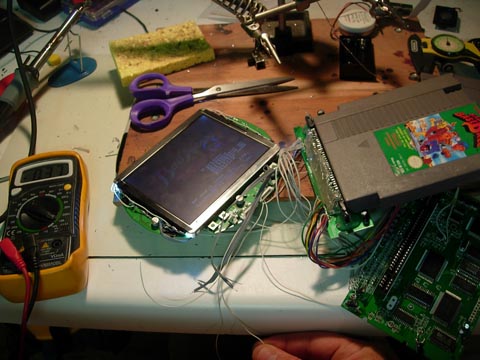
The NES side of the portable draws 370mA. Taking in efficeintcy of 80% and a 4.8V power source, 4 AA NiMH 2600mAh cells, I found that the portable will last 3.6 hours on one charge.
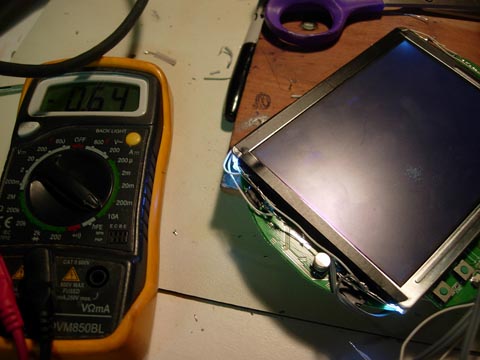
The SNES side draws only 640mAh. Using the same criteria as the last calculation I got 2.1 hours on one charge.
Worked on the case today and got most of it built.
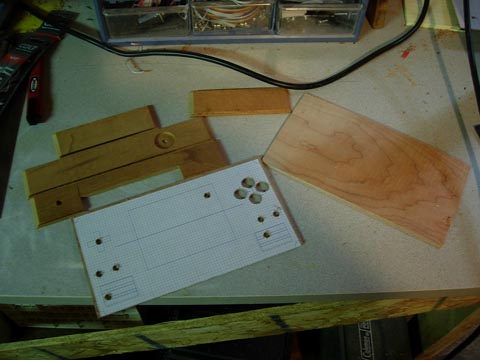
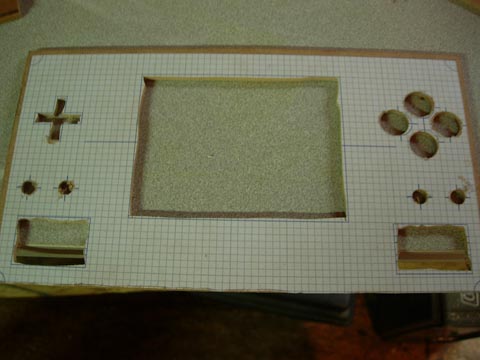
I used a scroll saw to cut the rough outline of the screen opening and speaker areas. I do this because it is allot easier to get a straight edge by filing down the edge to the line then it is to cut it.
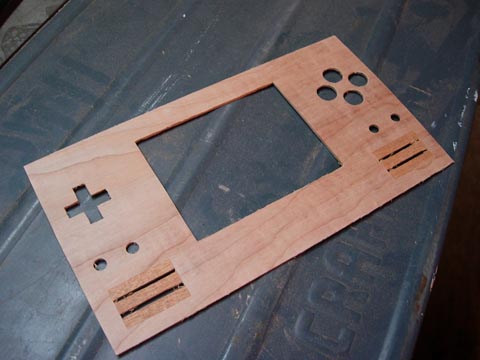
After a few hours of filing and sanding I came out with the finished front panel. The mahogany strips for the speaker covers are just wood glued in.
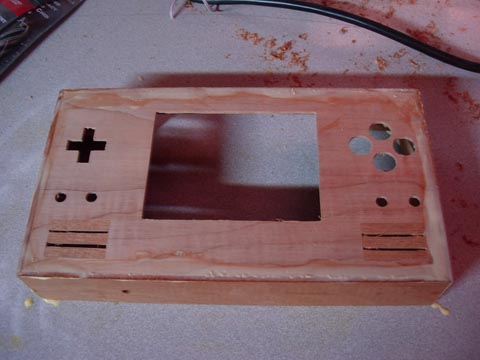
The trick is to glue the front panel and the sides together at the same time. This insures that the case is square.
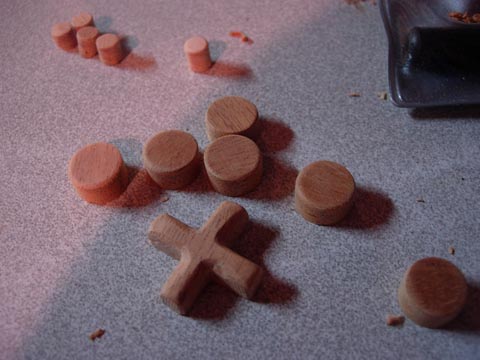
While the case was drying I cut out the buttons for the case. To cut them I use a zero taper plug bit. The D-pad is rough cut on the scroll saw and then filed down to the correct size.
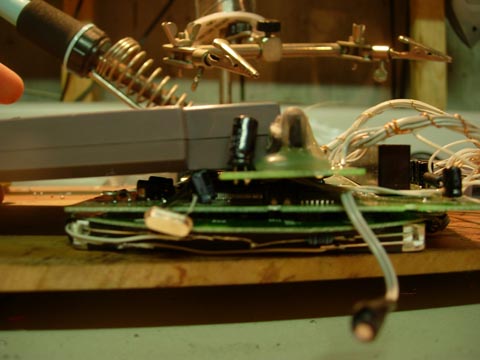
This is how the PCBs will stack up inside the case. I changed the design a bit and managed to squeeze the whole thing in a case the exact size as the SNES V2 case.
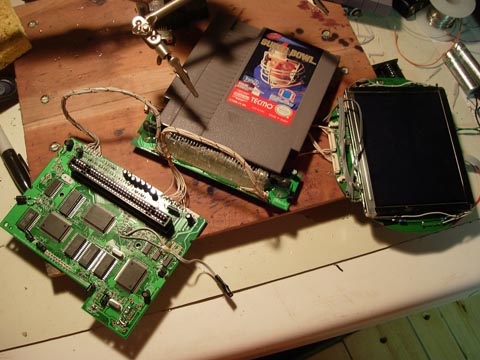
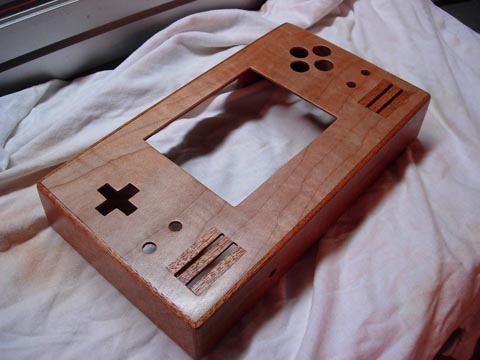
I finished the case Saturday night. Sanded it down with 220 grit and then applied 3 coats of Lacquer. The mahogany turned out ten times better then cherry does.
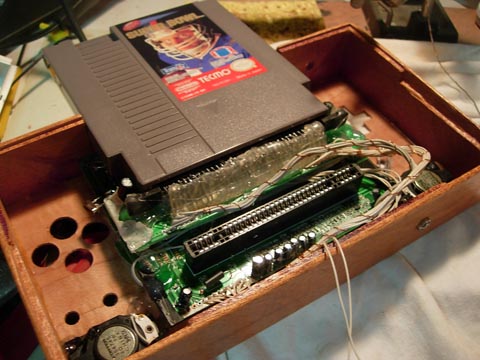
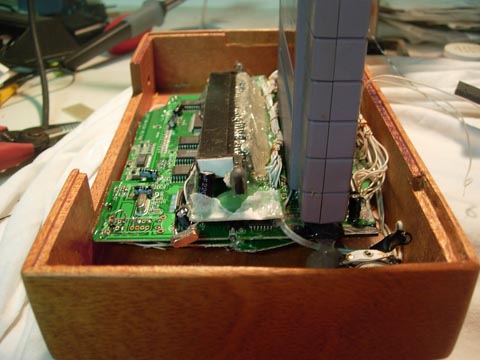
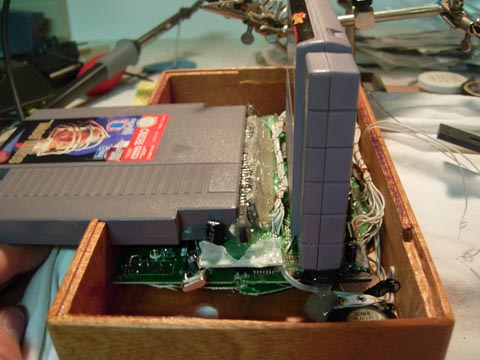
After waiting overnight for the lacquer to dry I stuck the guts into the case. I mounted the screen first and then the SNOAC board and then the NOAC came last. Each one has a layer of electrical tape to prevent shorting between boards.
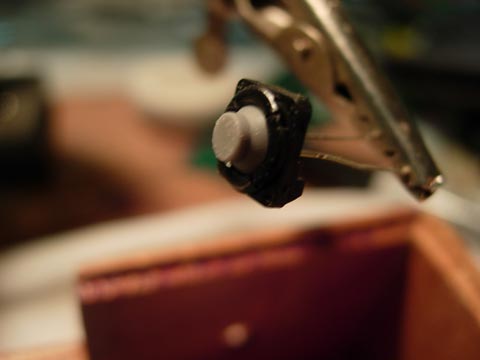
I found a better tact switch style. It has a rubber dome that feels exactly like a normal console controller would feel.
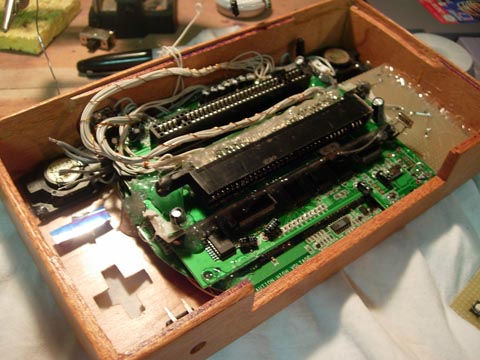

Only a couple more days left on on this portable. I have to wait till mouser sends me some more tacts tho.
Been doing allot of work on the Duop. I finished the controls and the power circuit today. Unfortunately the SNES side of the portable started acting up. It was like interference on the video line but the NES side was fine. I looked for spilled solder, tried larger wires, rerouting wires, cold joints, ect.. and no dice. I turned it on this afternoon and it refused to turn on. There is sound but no video on either the SNES and NES side.
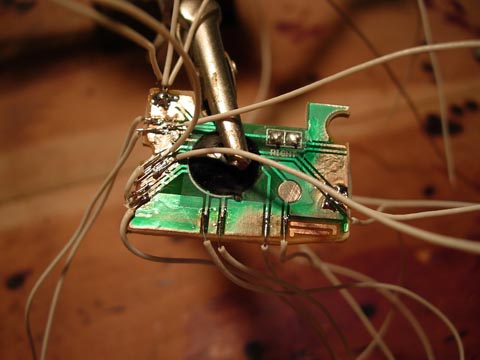
This is a controller IC from a retro duo controller. I cut it out this the scroll saw and filed it down. Was allot easier then making one out of two 4020s and a handful of resistors.

Because I redesigned the case where both carts can be inserted at the same time a switch in both cart slots to switch which one is inserted as the Duo would get confused and freak out. So I installed a little slide switch. The switch will have a wooden top and will blend in with the rest of the case.

Good ole PTN04050. Will boost the 4.8V from the batteries to a good solid 7.4V with 90% efficiency.
Well because the Duo died I won’t be entering this into the contest. When the new one comes in this portable will be finished as I can drop the Duo in after only a little bit of hacking.
Been awhile since I have worked on this but now its done! After fiddling with the AA batteries I came to the conclusion that they can not provide the amperage needed to power the Duo beast. So I ordered a 4000mAh 7.4V Lithium battery which was the largest thing battery I could replace the 4 AA’s with.

So the battery I ordered was about the same size as all 4 AA batteries stacked up. To make it fit I had to cut it open and flatten it out.
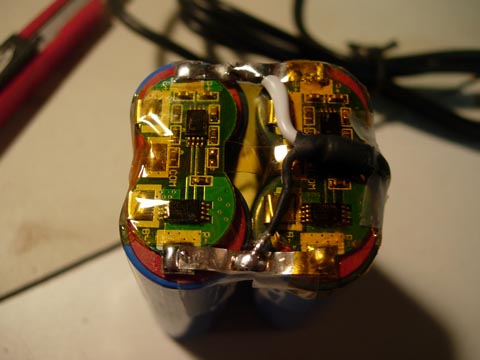
The battery has 4 lithium cells which are paired up behind a protection PCB. I decided to cut down the middle and tack on some wires so I could separate the two “packs”.
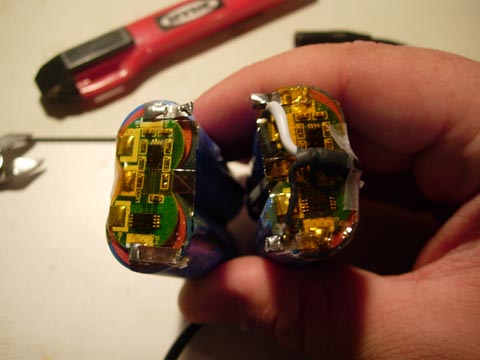
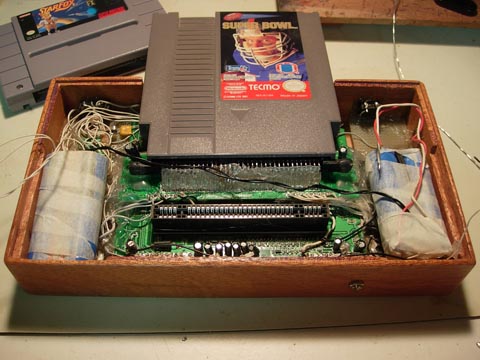
I placed the new batteries inside the portable and removed the PTN04050 from the power circuit as I am going to run the portable straight off the 7.4V battery.
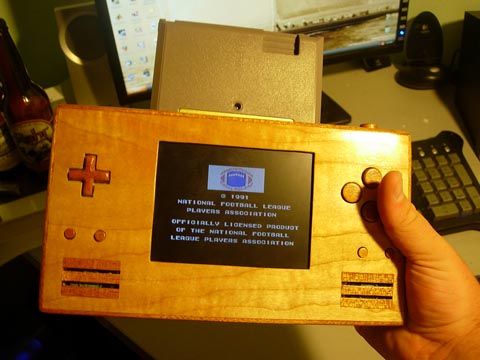
Testing done! Time for the photo shoot!
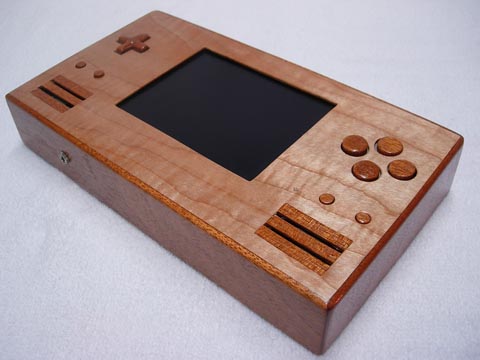
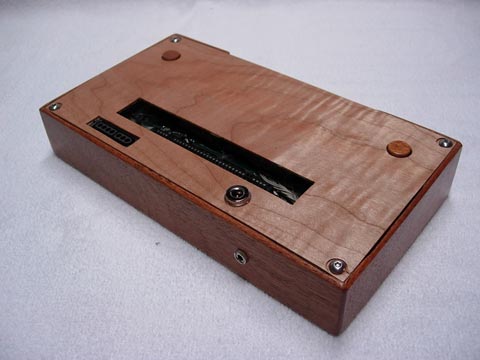
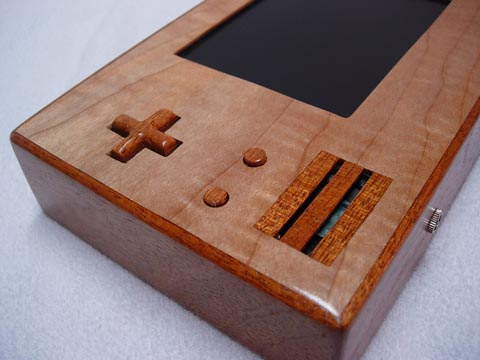
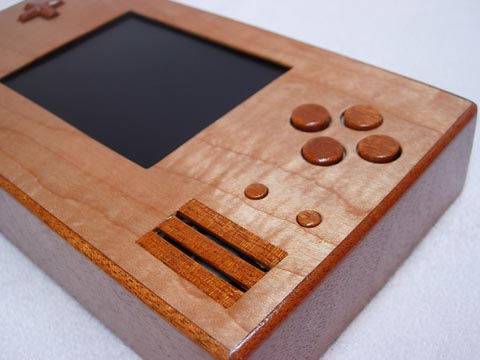
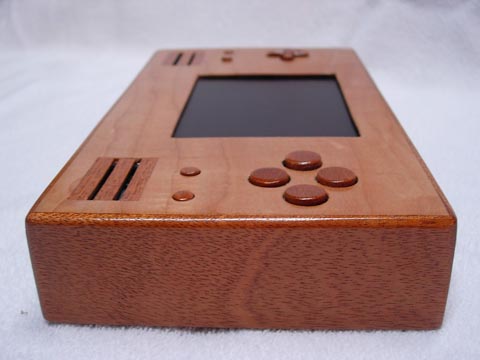
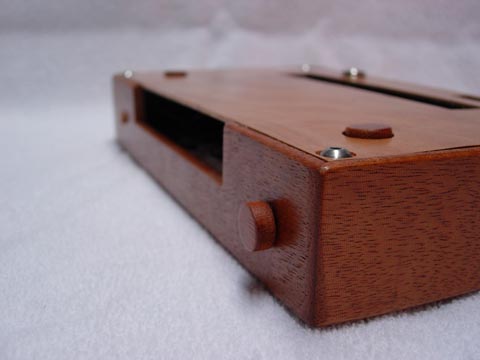
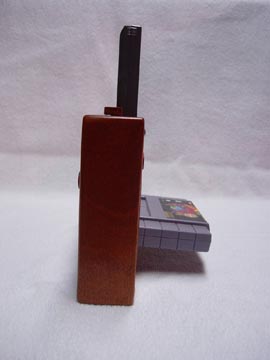
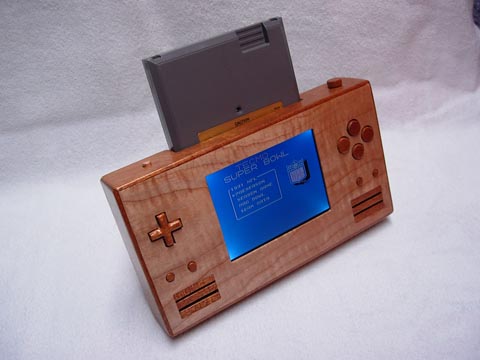
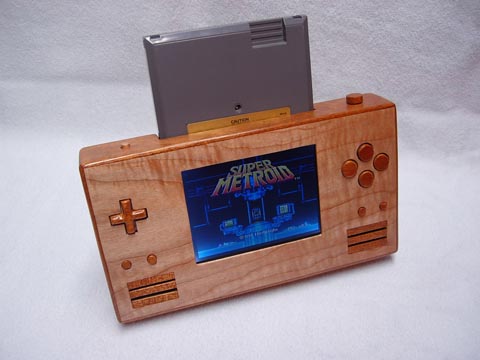

Final Specs
4.2 Hours of battery life
2 Hour charge time
Plays NES and SNES games
Rubber tacts that feel like a normal controller
Stereo Sound with Headphone jack
Dimensions 9 3/8″ x 5 1/8″ x 1 5/8″
Well that concludes the worlds first portable NES/SNES!
A little game play video of the Duop in action.
http://www.youtube.com/watch?v=OGjSSO7TFxY


